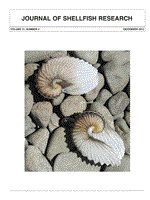We used a video camera mounted on the footrope of an ocean shrimp (Pandalus jordani) trawl to measure macroinvertebrate contact and disturbance rates directly from 4 different trawl footrope configurations. One footrope without a central groundline and 2 experimental footropes with groundlines that were modified to reduce macroinvertebrate impact were compared with the most common footrope style used in the fishery: a disk-covered groundline (mud gear). Relative to mud gear, the footrope without a central groundline reduced macroinvertebrate disturbance rates 99% for sea whips (Halipterus spp., P < 0.01), 100% for sea stars (Asteroidea) and anemones (P < 0.05), and 96% for Dungeness crabs (Cancer magister, P < 0.001). The experimental footrope incorporating a PVC pipe-covered groundline reduced disturbance rates for sea whips and Dungeness crabs by 63% and 55%, respectively (P < 0.001), but not for sea stars or anemones. The experimental footrope incorporating elevated sections of groundline reduced disturbance rates 100% for Dungeness crabs (P < 0.001). This study demonstrates that underwater video equipment can be used to measure quickly changes in macroinvertebrate disturbance rates from different ocean shrimp trawl footrope configurations. Our data also show that constructing shrimp trawl groundlines from smoother materials and with modifications to elevate or eliminate portions of the groundline have the potential to reduce significantly trawl-induced disturbance rates of benthic macroinvertebrates.
How to translate text using browser tools
1 August 2013
Direct Estimation of Disturbance Rates of Benthic Macroinvertebrates from Contact with Standard and Modified Ocean Shrimp (Pandalus jordani) Trawl Footropes
Robert W. Hannah,
Mark J. M. Lomeli,
Stephen A. Jones
ACCESS THE FULL ARTICLE

Journal of Shellfish Research
Vol. 32 • No. 2
August 2013
Vol. 32 • No. 2
August 2013
benthic impacts
ecosystem-based management
Pandalus jordani
shrimp trawl
trawl footrope




